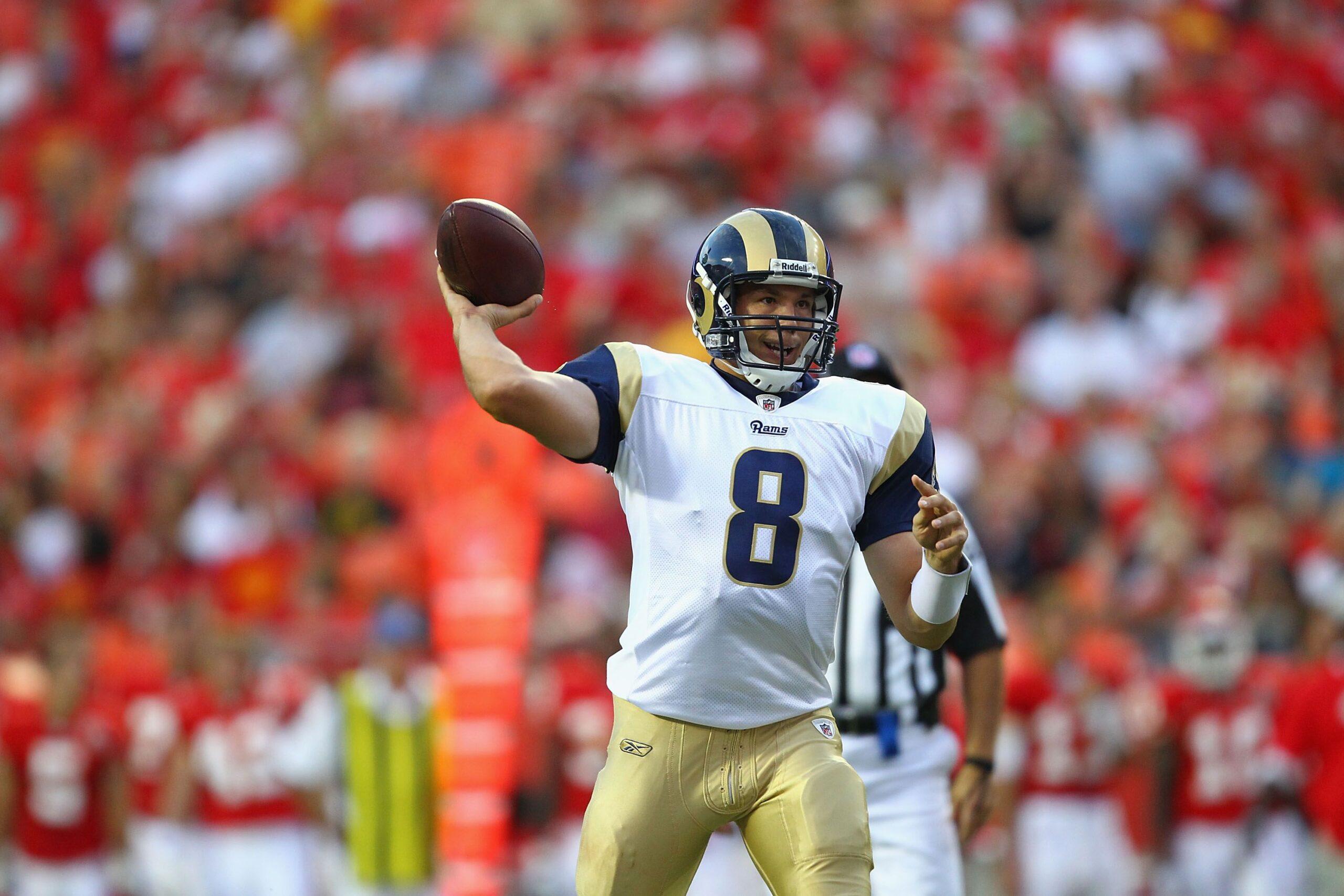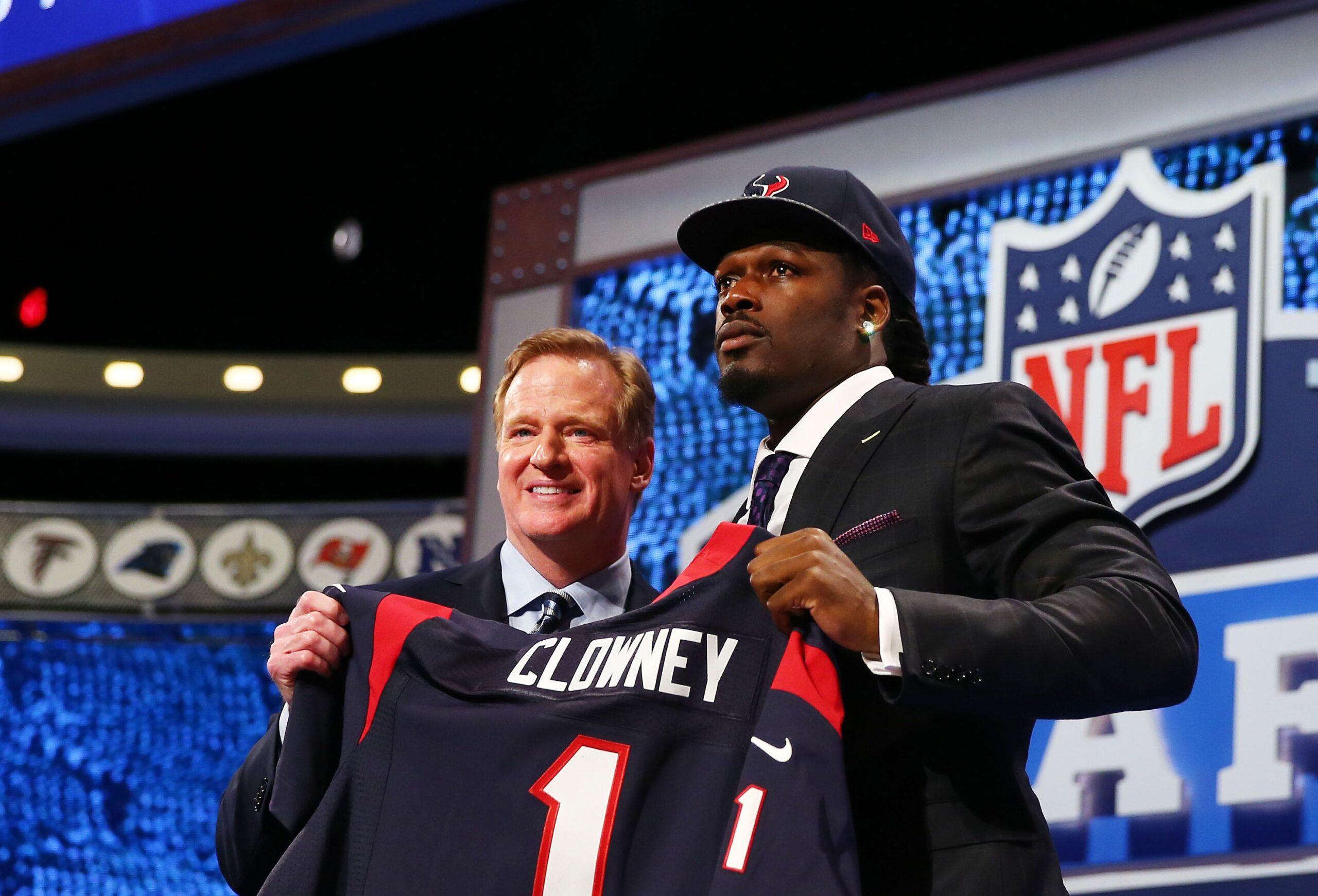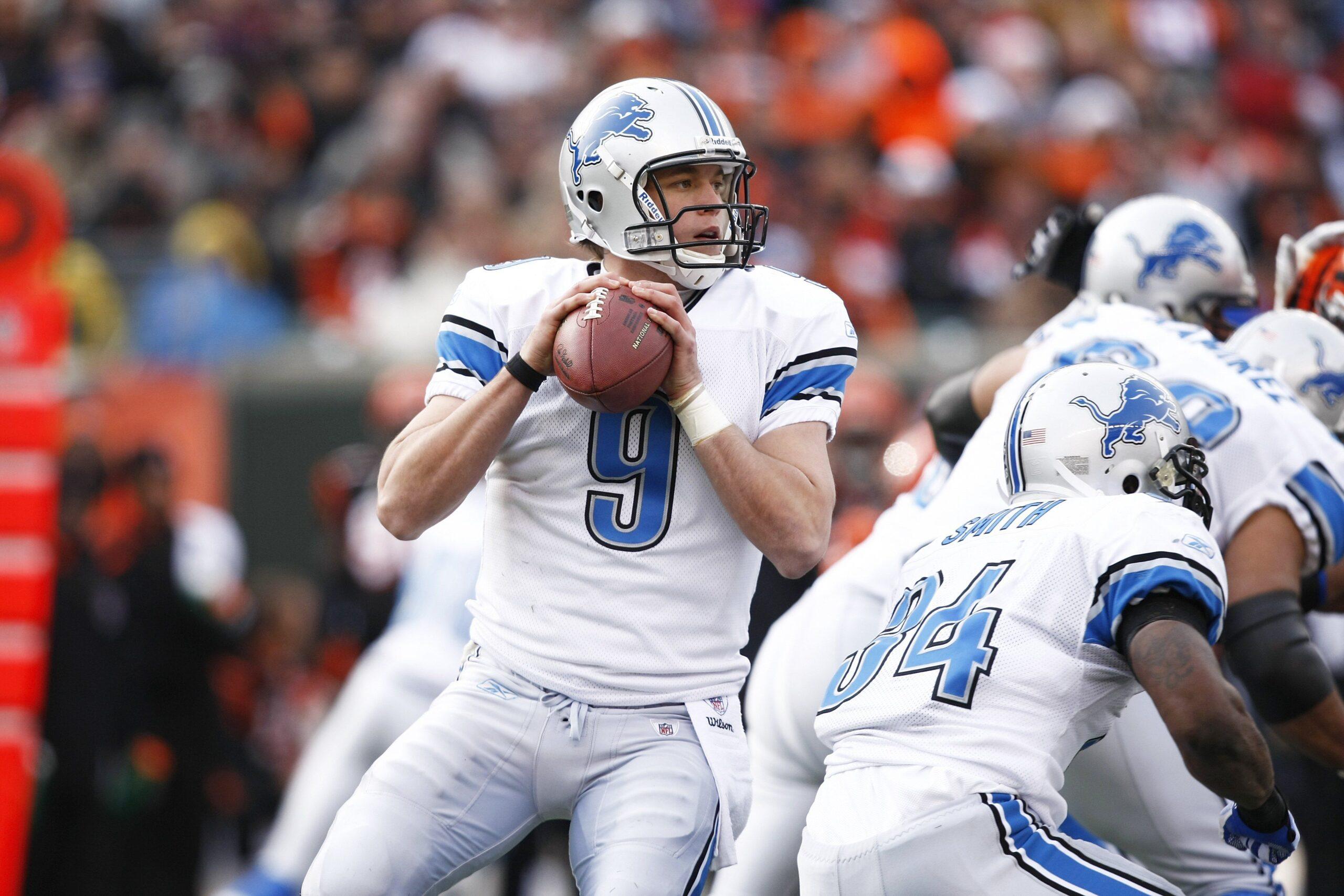Welcome to The Ringer’s 21st-Century NFL Draft Retrospective, where we’re looking back at the past 20 years of drafts to find the biggest hits, misses, and league trends since 2000. Who were the best selections? What lessons can be learned from the top picks that never worked out? What does the track record of no. 1 picks teach us about team-building? And how has the league changed in the past two decades?
The NFL draft is just a week away, and the Bengals have the crown jewel: the no. 1 pick. Despite the Dolphins’ tanking efforts—which were ruined by a late Ryan Fitzpatrick–fueled string of wins—Cincinnati was by far the worst team in the league last year. Now the Bengals are in prime position to take LSU quarterback Joe Burrow with the top pick and begin a rebuild with a promising franchise passer under center.
But is that pick really a ticket to a franchise turnaround? Think about it for a second: Who is the best no. 1 pick of the past 20 years? Andrew Luck or Cam Newton? With Luck retiring last offseason and Carolina cutting Newton last month, neither ended up having the franchise-altering career many hoped. Outside of those two, who else could it be? A quick look at the past two decades of drafts shows that the top pick is no instant fix for any franchise. In fact, that time frame provides a nearly perfect sample of every way a no. 1 pick can disappoint in the end. Take a look:
True Busts
- Courtney Brown, Cleveland Browns, 2000
- JaMarcus Russell, Oakland Raiders, 2007
Brown is arguably the biggest draft bust in Browns history (which is saying a lot), while Russell is arguably the biggest draft bust in NFL history (which is saying even more). This is as bad as it gets at the top of the draft.
Basically Busts
- David Carr, Houston Texans, 2002
- Sam Bradford, St. Louis Rams, 2010
Maybe Bradford or Carr could have found success if either had landed in the right situation—but that was never going to happen. Carr was drafted onto an expansion team saddled with a desolate roster and facing harsh restrictions. Just one season after the Jaguars and Panthers entered the league in 1995, both teams made their conference’s championship game—so the NFL overcorrected for subsequent expansion teams. Whereas Jacksonville and Carolina received full salary caps and 14 extra draft picks each over their first two seasons, the Texans were bound by stricter salary cap rules, and the extra picks they received were less advantageous (they began after all losing teams had made their second-round selections). As a result, Carr played behind a papier-mâché offensive line and the Texans didn’t have a winning season until their eighth year in the league.

Bradford, meanwhile, was one of the last players to reap the benefits of the NFL’s lack of a rookie wage scale. The Oklahoma passer broke the record for guaranteed money in a deal before he ever set foot on an NFL field. The next year, a new CBA was ratified that limited future rookie deals, but the Rams still had to juggle Bradford’s albatross contract. In the few years preceding the 2011 CBA, having the no. 1 pick was almost a burden—both for the teams trying to build fleshed-out rosters and the players beginning their careers. Don’t feel bad for Bradford, though. While his career never took off—and injuries didn’t help, to be fair—you wouldn’t know that from looking at his bank account.
In Limbo
- Jadeveon Clowney, Houston Texans, 2014
- Jameis Winston, Tampa Bay Buccaneers, 2015
Neither of these guys made it to a second contract with the team that drafted them, so it’s hard to view these no. 1 picks through a positive lens. Yet they’ve also combined for four Pro Bowl appearances—so neither was a total disaster. Winston might still be in Tampa Bay if Tom Brady hadn’t gazed in that direction, and Clowney might still be Houston if the Bill O’Brien regime knew what it was doing. Now both are in limbo and looking for their next teams on the free-agent market.
Teams want a slam dunk with the no. 1 pick. Neither Clowney nor Winston were anywhere close.

He’s Fine
- Eric Fisher, Kansas City Chiefs, 2013
- Jared Goff, Los Angeles Rams, 2016
Goff took the Rams to the Super Bowl and made the Pro Bowl twice after Sean McVay came to town. But he’s hardly the type of quarterback a team wants to pay $33 million a year, and that’s what Los Angeles is on the hook for through 2024. Goff puts the Rams in a kind of purgatory—as long as they have him, they’ll have stability at the most important position in football. But as long as they’re paying him that amount, they will probably never be able to put a good roster around him. He’s a catch-22 under center.
Fisher, meanwhile, has held down a tackle spot on the Chiefs’ offensive line for seven years—but he’s made just one Pro Bowl in that stretch. A reliable left tackle is important, but a team hopes for more than just reliability with the top pick in the draft.
Found Real Success Elsewhere
- Michael Vick, Atlanta Falcons, 2001
- Carson Palmer, Cincinnati Bengals, 2003
- Alex Smith, San Francisco 49ers, 2005
Vick was the best quarterback in football in 2004 … if you were playing Madden. And while he took the Falcons to the NFC championship game that season, he also played abysmally in that game (11-of-24 for 136 yards and an interception). That’s pretty much the Vick experience in Atlanta: incredible in spurts, but lackluster as a whole. His best years came in Philly, especially in 2010 when he tossed 21 touchdowns and just six interceptions in 12 games.
Palmer also had some success with the team that drafted him, leading the league in passing touchdowns in 2005 while making the Pro Bowl twice as a member of the Bengals. But his career in Cincy sputtered and he eventually demanded a trade. At his peak with the Cardinals in 2015, he had a case for the MVP award.
Smith meanwhile went through an early-career roller coaster. The 49ers of the mid-2000s were terrible and changed offensive coordinators nearly every season. Smith didn’t blossom until he was on the Chiefs in 2013.
Pretty Good
- Mario Williams, Houston Texans, 2006
- Matthew Stafford, Detroit Lions, 2009
In hindsight, Williams was a better player than Reggie Bush—but it’s not like Houston’s shocking decision to draft Williams over the former Heisman winner (if we can still call him that) was a home run. Williams racked up 53 sacks in six seasons in Houston and made the Pro Bowl twice before hitting free agency.

Stafford, meanwhile, fell victim to the same conundrum as Bradford. After taking him and defensive tackle Ndamukong Suh in 2010, the Lions had foundational building blocks on both sides of the ball. There was just one problem: They had to pay Stafford and Suh so much money that they couldn’t afford to fill out the rest of their roster for much of the beginning of Stafford’s career. He’s turned into a pretty good quarterback—but he hasn’t changed the franchise.
Too Soon to Tell
- Myles Garrett, Cleveland Browns, 2017
- Baker Mayfield, Cleveland Browns, 2018
- Kyler Murray, Arizona Cardinals, 2019
Let’s take a rain check here and circle back on these guys in a few years.
Bright Flames
- Jake Long, Miami Dolphins, 2008
- Cam Newton, Carolina Panthers, 2011
- Andrew Luck, Indianapolis Colts, 2012
Here is where things get tricky. As far as talent goes, all of these players proved they were worthy of being the no. 1 pick of their respective drafts. But their careers didn’t quite provide the return on investment their teams had hoped for.
Long’s body began to break down after four Pro Bowl years with the Dolphins. A back ailment and a biceps tear kept him off the field in Miami. In 2014, he tore his ACL with the Rams and never fully recovered. There’s an alternate timeline in which Long is a generational talent at left tackle—but injuries kept him from reaching those heights.
Luck, meanwhile, had similar injury concerns. A shoulder ailment kept him off the field for all of 2017, and many other issues sprung up during his career, including calf and ankle injuries. He retired suddenly before the 2019 season, saying “I haven’t been able to live the life I want to live” and citing constant pain. Luck was on track to have a Hall of Fame career, but now his story is one big “what-if.”
The final chapters of Newton’s career aren’t written yet. Like Luck and Long, though, he’s suffered from numerous injuries that have taken him off the field and most recently resulted in the Panthers cutting him. The former MVP has yet to find a new landing spot.
All three of these guys have plenty of talent, but none of them were able to stay healthy long enough to have the ideal longevity of a no. 1 pick. They’re examples of how even the surest bets in the NFL can go wrong—and it’s no one’s fault.
Eli Manning
- Eli Manning, San Diego Chargers, 2004
With two rings and 16 seasons with the Giants, I suppose Eli Manning is the best no. 1 pick of the past 20 years. That’s not to say he’s the best player on this list—he’s a career .500 quarterback who made four Pro Bowls, had a tendency to throw too many picks, and never put up any season that was that statistically impressive—but he was at least above average enough to hang around for a long time. Stability at quarterback is important, and Manning provided that for the Giants for a decade and a half. He’ll almost certainly be a Hall of Famer, for better or worse. No one else on this list can say the same thing.
Of course, his inclusion here comes with the enormous caveat that HE NEVER PLAYED FOR THE TEAM THAT DRAFTED HIM. Manning refused to play for the Chargers, who proceeded to trade him to the Giants after he forced their hand. San Diego got Philip Rivers—who might be the better player of the two—and a handful of other picks and players in return for Manning, but the pick didn’t result in the glory the Chargers wanted.
The past 20 years of drafts illustrate nearly every way a no. 1 pick can go wrong. A team can select an all-time bust, a normal bust, or a just OK player. Or teams can see their no. 1 pick ruined by injuries or roster mismanagement—or just become a late-bloomer who finds success only once he’s part of a different franchise. Or, hell, that no. 1 pick can just refuse to play for the team that drafted him.
There hasn’t been a franchise-altering player drafted in the no. 1 spot since Peyton Manning in 1998. That’s stunning—especially given how tanking has dominated the draft conversation for the past several years. Look at the list above again; only one team on it has won a Super Bowl with the player they took no. 1, and that’s the Chiefs with Fisher. Goff and Newton came close, and Manning counts only if you add an asterisk.
The lesson here is that the no. 1 pick cannot change a franchise by himself. It takes the right player, the right team around him, and plenty of luck. For Burrow to be the franchise-altering force the Bengals want, they’ll need all three.
